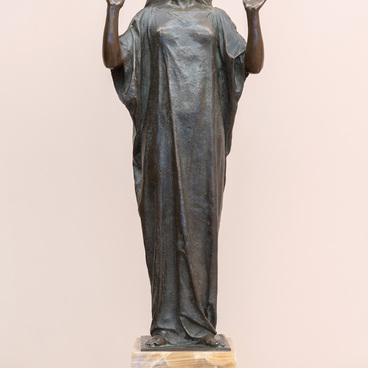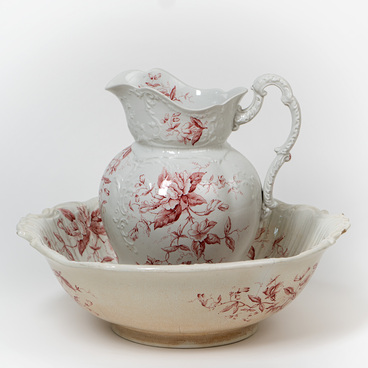In the pre-revolutionary era, the Alexander Palace library halls were filled with a large number of interior sculptures. Among the bronze sculptures was the image of the outstanding German geographer, botanist, zoologist and traveler Baron Alexander von Humboldt (1769–1859) by the German sculptor Carl Wolgast.
Humboldt’s first contacts with Russia were in correspondence with the Minister of Finance Kankrin on the practicality of minting platinum coins. Later, the German scientist received an invitation from Emperor Nicholas I to undertake a trip to the east of the Russian Empire. In the “interests of science and the country” the Emperor decided to assign the costs of Humboldt’s trip to Russia to the state account.
In the spring of 1829, the scientist and his colleagues arrived in St. Petersburg and were warmly received at court. Humboldt dined with the imperial family and spent evenings with the Empress. The Heir to the throne arranged a special dinner in his honor, “to keep memories of it”. The scientist was shown the richest at the time collections of minerals and fossil artifacts from the Museum of the Mining Cadet Corps and the Mineralogical Society. At one of the sessions of the Academy of Sciences Humboldt was awarded a silver and bronze medal and a diploma of Honorary Member of the Academy.
The scientist traveled to the eastern part of the Russian Empire via Moscow, Vladimir and Nizhny Novgorod. From Nizhny Novgorod along the Volga to Kazan, and from there to Yekaterinburg and Perm. It was from there that the scientific expedition actually began. For several weeks, travelers moved through the Lower and Middle Urals, exploring its geology, visiting factories, inspecting the mining of iron ore, gold, platinum and malachite. Then the team of scientists went to Tobolsk, and from there to Barnaul, Semipalatinsk, and Omsk. Later the expedition traveled through Orsk and Orenburg to Astrakhan. The travelers made a short trip across the Caspian Sea and finally returned to St. Petersburg in November 1829.
This very successful expedition produced rich zoological and botanical collections and Alexander von Humboldt’s three-volume monograph “Central Asia. Studies on Mountain Ranges and Comparative Climatology”. The works of the famous German naturalist are kept in Nicholas I’s personal collection of books and are on display at the Alexander Palace library.
Humboldt’s first contacts with Russia were in correspondence with the Minister of Finance Kankrin on the practicality of minting platinum coins. Later, the German scientist received an invitation from Emperor Nicholas I to undertake a trip to the east of the Russian Empire. In the “interests of science and the country” the Emperor decided to assign the costs of Humboldt’s trip to Russia to the state account.
In the spring of 1829, the scientist and his colleagues arrived in St. Petersburg and were warmly received at court. Humboldt dined with the imperial family and spent evenings with the Empress. The Heir to the throne arranged a special dinner in his honor, “to keep memories of it”. The scientist was shown the richest at the time collections of minerals and fossil artifacts from the Museum of the Mining Cadet Corps and the Mineralogical Society. At one of the sessions of the Academy of Sciences Humboldt was awarded a silver and bronze medal and a diploma of Honorary Member of the Academy.
The scientist traveled to the eastern part of the Russian Empire via Moscow, Vladimir and Nizhny Novgorod. From Nizhny Novgorod along the Volga to Kazan, and from there to Yekaterinburg and Perm. It was from there that the scientific expedition actually began. For several weeks, travelers moved through the Lower and Middle Urals, exploring its geology, visiting factories, inspecting the mining of iron ore, gold, platinum and malachite. Then the team of scientists went to Tobolsk, and from there to Barnaul, Semipalatinsk, and Omsk. Later the expedition traveled through Orsk and Orenburg to Astrakhan. The travelers made a short trip across the Caspian Sea and finally returned to St. Petersburg in November 1829.
This very successful expedition produced rich zoological and botanical collections and Alexander von Humboldt’s three-volume monograph “Central Asia. Studies on Mountain Ranges and Comparative Climatology”. The works of the famous German naturalist are kept in Nicholas I’s personal collection of books and are on display at the Alexander Palace library.




